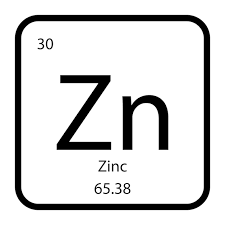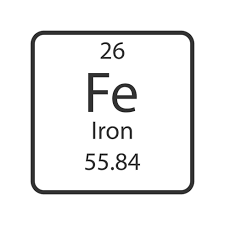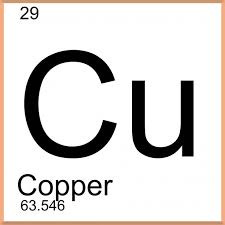Hair loss is normally dismissed as a result of an unfortunate set of genetic circumstances. It is usually, if somewhat reluctantly, accepted as nothing more than an aesthetic issue and is frequently viewed as a normal male problem. When it happens to woman, however, due to it being much rarer, it is often seen as an indicator of some underlying problem. Unfortunately, this may well be the case for both sexes. Thinning hair can sometimes be the most visible symptom of more serious, health issues.
Mineral Deficiencies
A lack of certain minerals is one of the more common causes of thinning hair. Some of them are essential for hair growth and deficiencies can lead to a number of illnesses.
ZINC
This mineral plays various roles in hair growth. It helps inhibit the follicles from changing from the anagen, or growth phase, to the catagen phase, which is the short transition period before the resting phase. This promotes longer periods of actual hair growth. It also works in combination with numerous enzymes involved in hair production and plays a crucial role in the pathway, known as the hedgehog signalling pathway, which is involved in cell differentiation in new cells.
If hair loss is because of a zinc deficiency it could signal other potential health problems as the mineral has a number of vital functions in the body.
Zinc and the immune system
Zinc is an important component of the immune system as it is essential for development of leucocytes such as neutrophils, natural killer cells, T and B cells and macrophages. It is also needed for the production of cytokines required for cell signalling. In addition to this, Australian researchers have discovered that zinc can prevent the bacteria Streptococcus pneumonia from utilising manganese, an element that is essential for the bacteria to thrive and cause disease. Other studies have shown that zinc can inhibit the replication of herpes simplex virus and a deficiency can lead to the proliferation of the candida fungus. Candidiasis can cause leaky gut syndrome, leading to food allergies, irritable bowel syndrome and other inflammatory conditions such as arthritis, eczema, multiple sclerosis, fibromyalgia and Raynaud’s. In people with compromised immune systems, it may become invasive, affecting the brain, heart, spleen, kidneys and eyes. A lack of zinc, therefore, could cause immune dysfunction leading to an increase in various types of infections.
Zinc and the endocrine system
Zinc plays a vital role in hormone production and a lack of it can lead to some serious health problems. It is needed for the creation of the thyroid hormone, triiodothyronine (T3) and a lack of the mineral can lead to hypothyroidism. This can cause mental health issues such as memory problems and depression. It can also cause weight gain, infertility, fatigue, high blood pressure and muscle cramps. It is essential for the optimum functioning of another hormone, insulin, by protecting the beta cells in the pancreas from destruction. It is also important in the storage, processing and secretion of insulin. A deficiency of the mineral, therefore, could lead to insulin resistance and diabetes.
Zinc and Inflammation
Zinc is critical in preventing the immune system from overreacting to infection and creating uncontrolled inflammation. When an infection occurs, zinc is transported into the cell where it binds with a protein known as IKKB, turning off the inflammatory process. It does this by targeting the proinflammatory cytokines Tumour Necrosis Factor alpha (TNFa) and Interleukin 1 beta (IL-1b) whilst simultaneously increasing the production of the proteins A20 and Peroxisome proliferator-activated receptor alpha (PPAR – a), both of which have anti-inflammatory properties. Inflammation can be the causative factor in numerous illnesses such as heart disease, Alzheimer’s disease, kidney disease, rheumatoid arthritis, colitis, Crohn's, diabetes, and cancer.
Zinc and cancer
As mentioned above, inflammation is a known cause of cancer. Another factor is oxidative stress, where cells are damaged due to the actions of free radicals. Zinc is important in this respect as it acts as a powerful antioxidant, helping neutralise the effect of free radicals. A lack of zinc has been linked to cancers of prostate, head, breast, digestive, gall bladder and lung.
IRON
Iron is important for hair growth. In the body it is stored within a protein called ferritin. A lack of it can lead to the growth phase of the hair cycle being decreased, with hairs not growing to their full potential length and falling out prematurely. It is the major component of haemoglobin which transports oxygen to the cells. Oxygen is essential for the production of Adenosine Triphosphate (ATP) – the energy molecule. Consequently, a lack of iron leads to less oxygen being transported around the body and if less oxygen reaches the scalp, there will be less energy for hair growth.
If hair loss is due to an iron deficiency it may be a sign of other underlying medical conditions.
Iron and the immune system
Iron is a vital component of the immune system. It is necessary for cell division and the functioning of enzymes involved in the immune process. It is also important for cytokine production. It is vital for cell - mediated immunity and a deficiency can cause the degeneration of the thymus gland and accompanying reduction of T cell numbers. Lack of iron also has a deleterious effect on Natural Killer cells and neutrophil function. An iron deficiency therefore makes the body more susceptible to infections such as tonsillitis, herpes, thrush, ear infections and mouth ulcers.
Iron and the endocrine system
Iron levels can affect many aspects of the endocrine system. For example a study of patients with persistent hypothyroid symptoms suggested that between 30% and 50% may be iron deficient.
Iron deficiency can not only be the cause of serious illnesses but may also be a symptom. A deficiency may simply be due to a lack of iron in the diet but it could also be caused by intestinal bleeding from ulcers or colon cancer. An inability to properly absorb iron may also lead to a deficiency and there are many illnesses which may cause this, for example coeliac disease, IBD, pancreatitis, giardiasis, cystic fibrosis, malignant lymphoma and Helicobacter Pylori infection.
COPPER
Copper is another essential trace mineral which plays a role in the maintenance of healthy hair. Like iron, it is a necessary element in the synthesis of haemoglobin. A deficiency could lead to weakened hair shafts and hair loss.
Copper and neurological disorders
Copper is found in numerous regions of the brain and is important for the functioning of many central nervous system enzymes. One aliment linked to a lack of copper is ataxia. This can involve numbness of hands and feet, over-reactive reflexes, muscle spasms, and decreased sensitivity to touch, all leading to lack of limb co-ordination and severe difficulty in walking and movement. Other serious conditions linked to a deficiency of this mineral is motor neuron disease and Parkinson’s disease .
Copper and the Immune system
The immune system can also be adversely affected by a copper deficiency. A lack of the mineral results in a reduction of T cells and neutrophils and thus compromises the body’s ability to destroy pathogenic micro-organisms.
Copper and bone health
Bone health is affected by copper in various ways. The mineral forms part of an enzyme that plays an important role in collagen formation within the bone and in helping add strength to the bone structure. It is also reduces de-mineralisation due to the breakdown of bone via osteoclasts. As a result, copper deficiency can affect the integrity of bones and cause osteoporosis.
Copper and inflammation
Copper has known anti-inflammatory properties. A deficiency can promote an inflammatory response by increasing the effects of pro-inflammatory enzymes and cytokines. Improvement in the conditions of patients with inflammatory conditions, such as rheumatoid arthritis, after treatment with copper, emphasises the importance of the mineral as an anti-inflammatory agent .
Copper and cardiovascular problems
A lack of copper can also adversely affect the heart in a number of ways and it has even been suggested that it could be a leading cause of ischaemic heart failure. It has been shown to cause aortic fissures and ruptures, coronary artery thrombosis and myocardial infarction. Other studies have shown a deficiency to cause enlargement of the heart and heart failure and that treatment with copper can improve the symptoms of patients with heart failure and ischemic heart disease. It is believed that this is due to the antioxidant properties of the metal.
*It should be noted that an excess of minerals can also cause health issues. Before taking any supplements ensure you have been properly diagnosed with a deficiency and only take high quality supplements as some of them can be contaminated with various heavy metals.
Toxic Overload
Toxic overload can cause a multitude of problems, many of which may be misdiagnosed or misunderstood. However, hair loss may be the first obvious outward sign that the body is being poisoned.
Arsenic
It is believed Arsenic causes hair loss due to oxidative stress and its ability to inhibit production of the Wnt protein which is required for cell proliferation.
Chronic arsenic exposure can lead to scaly skin, dermatitis, fatigue, confusion, sensory peripheral neuropathy, anaemia and leukopenia. It is also known to cause cancers, particularly of lungs, liver, bladder and colon.
Arsenic can either be organic or inorganic, with the latter being the most dangerous. Organic contamination is normally caused by ingesting food containing arsenic such as seafood and rice. Inorganic toxicity occurs from various sources, the main ones being from coal-fired power stations, smelting works and from certain insecticides and wood preservatives.
Mercury
Mercury effects the hair at its growth stage, causing what is known as anagen effluvium, which is hair loss similar to that caused by chemotherapy agents. It does this by binding with the sulphydryl group of the keratins in the hair.
Mercury can be found in three forms – elemental, organic and inorganic. Elemental mercury is usually found in liquid form such as that in thermometers but is also found in dental amalgam fillings. The main source of organic mercury is seafood. Inorganic mercury was previously found in various products such as drugs, germicide solutions and cosmetics and was once used in gold mining but its use has now been widely discontinued due to its toxicity.
The main causes of contamination are from air, water, dental fillings, seafood and vaccines. Mercury in air and water is mostly a result of pollution from mining and power stations. This is also how fish and seafood become contaminated.
It is only fairly recently that the health effects of mercury fillings have been acknowledged although mercury’s toxicity has been known for a very long time. Mercury vapour is continuously released from the fillings with 80% of it accumulating in the body. As there is no safe limit of mercury, every atom has the potential to cause damage.
Mercury in vaccines has become a very controversial issue. It is in the organic form known as thimerosal and is used as a preservative. It was used in various vaccines but is now mainly restricted to flu vaccines. The main issue is the link between thimerosal and autism – a link which appears to have been proved after a whistle-blower at the Centre for Disease Control and Prevention (CDC) leaked information that the organisation had covered-up evidence that supported the idea that thimerosal in vaccines could cause the disease.
Autism, however, is just one of many symptoms associated with mercury overload. Others include mental deterioration, memory loss, breathing difficulties, tremors, kidney damage, ataxia and hearing and vision loss.
Lead
Lead causes hair loss by disrupting the formation of the hair shaft by its ability to bond with sulfhydryl groups within keratin.
Lead-based paint and plumbing used to be the main source of contamination although these have now been banned. Smelting and mining can cause environmental pollution. Other industrial sources of exposure are the rubber, plastics and printing industries and the manufacture of lead-acid motor vehicle batteries.
A lot of the damage done to the body by lead exposure is due to creation of Reactive Oxygen Species sometimes referred to as free radicals. Antioxidants normally neutralise these particles but when there are too many of them or a body’s antioxidant supply is low, this causes oxidative stress. This can lead to illness such as diabetes, high blood pressure, heart disease, cancer, Parkinson’s and Alzheimer’s. Lead is particularly dangerous as it inactivates certain antioxidants in the body including the main one, glutathione, exasperating the problem of oxidative stress.
Other illnesses associated with lead toxicity are fatigue, hearing loss, seizures, weight loss and pica – a disorder where the person feels compelled to eat objects other than food such as clay, paint chips, paper and hair.
Cadmium
Like other heavy metals, cadmium is thought to cause hair loss by binding to certain sulfhydryl groups within keratin causing a loss of integrity of the hair shaft . Another possible reason for cadmium being a factor in hair loss is the fact that it depletes copper and zinc, both essential for hair growth.
Cadmium pollution can arise from many sources. Volcanism is the main natural cause. As for human activity, the main source would come from waste disposal and incineration, the burning of coal, the manufacture of phosphate-based fertiliser and steel, iron and zinc production. Cigarette smoke is also seen as a major source of contamination.
The mechanisms by which cadmium damages the body are varied. Like all heavy metals it causes oxidative stress. It also causes changes to gene expression, affects mitochondrial function, and depletes glutathione, the body’s major antioxidant .
Symptoms of chronic cadmium toxicity include kidney damage, anaemia, emphysema and osteoporosis. As cadmium is carcinogenic it can also raise the risk of certain cancers like prostate cancer .
Lithium
Lithium’s ability to cause hair loss is believed to be due to its tendency to cause hypothyroidism. As discussed previously, an under functioning thyroid can cause hair loss.
Lithium is used to treat psychiatric issues such as bi-polar disorder. However, it is also used to produce lithium batteries and this is the main source of pollution as they are discarded in landfill sites and leach into the environment.
Apart from hair loss and hypothyroidism, there are a number of health issues arising from Lithium toxicity. It can cause cognitive impairment, kidney damage and tremors.
Thallium
Thallium toxicity leads to hair loss as it causes disruption to the hair growth phase because it can affect cell division and the metabolic activity of the hair follicle.
It is used in the semi-conductor industry, the manufacture of optical glass, medical imaging equipment, thermometers and radiation detection equipment.
It can cause serious health issues such as tachycardia, hypertension, polyneuropathy, ataxia, tremors, seizures and jaundice and can also lead to mental problems like anxiety, depression, hallucinations, psychosis and dementia.
In conclusion
If you do suffer from hair loss it would be advisable to get it checked out. Initially, the best way of doing this is to get a hair mineral analysis test. This will give you an indication of any potential mineral deficiencies or if you are suffering from a toxic overload. Depending on the findings, more specific tests should be carried out to ascertain the exact nature of the problem. It may be that mineral supplements will be required or a detoxification program may be recommended. If other underlying health issues come to the fore, they can then be treated also.
You may have resigned yourself to the fact that your thinning hair is permanent but if you discover the underlying cause, this may not be the case. More importantly, you may also be able to start addressing the health issues you never even knew you had and take the first steps on the road to wellness.












